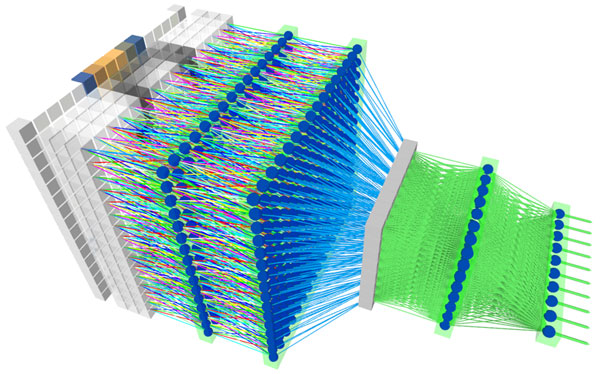
Whetstone brain-inspired computing
Signal processing and sensor analysis applications increasingly rely on machine learning via artificial neural networks to make inferences and rapidly identify information. For power-constrained applications, neuromorphic processors that mimic the behavior of the human brain offer a low-power solution, but at the cost of significantly greater programming complexity. Whetstone software trains conventional learning networks to behave like the spiking neural networks required by neuromorphic processors, thereby simplifying development and accelerating time to deployment. Whetstone is an open-source software tool. It has been published in Nature: Machine Intelligence and has been adopted at Oak Ridge National Laboratory, the University of Tennessee and Virginia Tech. (1000)
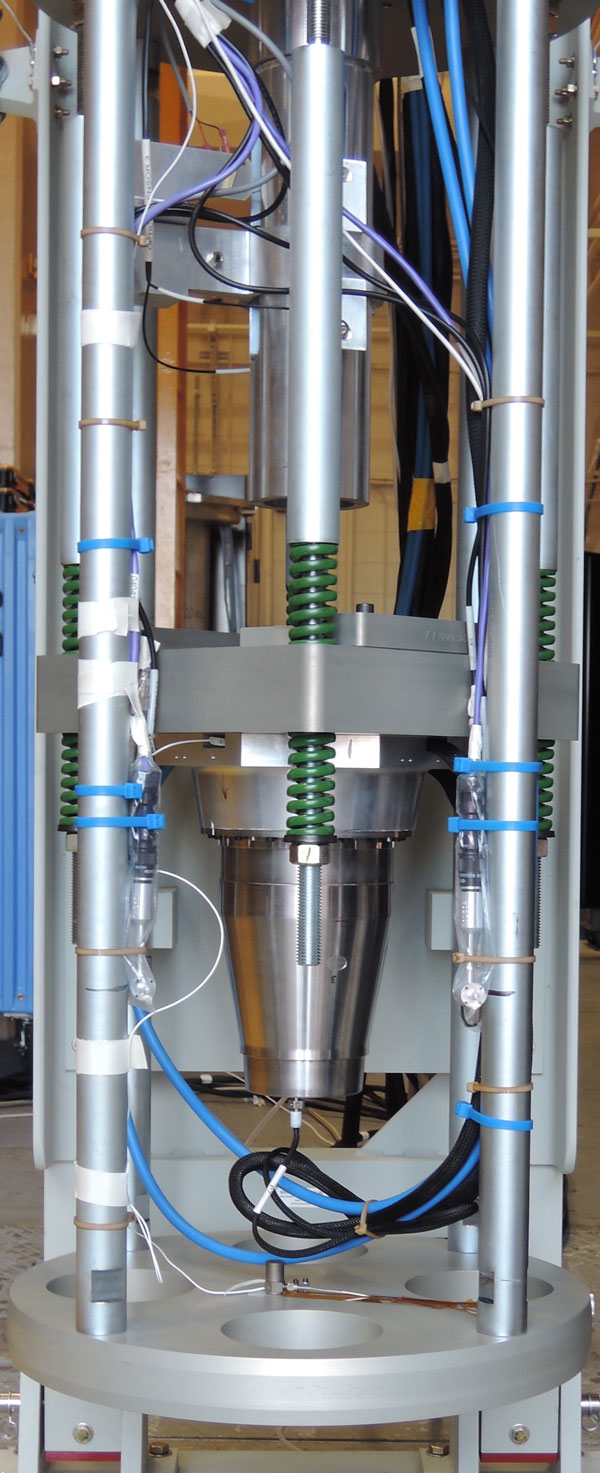
Combined hostile shock, radiation testing
Sandia engineers completed two major experiment milestones focused on reconstitution of combined hostile environments at the Annular Core Research Reactor. The High-G project focused on producing a combined hostile radiation exposure and specifically timed hostile shock application to a test object. These advanced, qualification-like experiments were performed on both a fuze system and material test samples, in preparation for potential future qualification activities for Sandia and Lawrence Livermore national laboratories. These experiments were the culmination of an accelerated 18-month concept-to-completion cycle for the apparatus. (1000, 2000, 8000)
Institutional BioSafety Committee consolidation
Sandia conducts biological sciences research in New Mexico and California labs that are regulated by federal, state and local guidelines. For many years, Sandia had two IBCs that governed work in these labs. Management determined that one IBC could govern biosafety activities to meet all applicable requirements. A single IBC was formed to streamline practices, reduce risk and create a unified user researcher experience across the two sites. (8000)
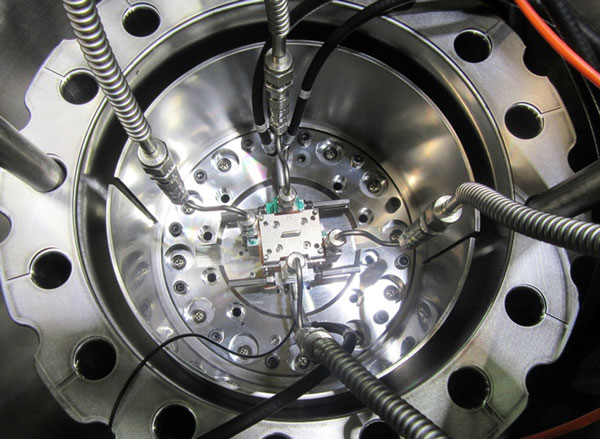
Temperature of dynamically compressed plutonium
Sandia, in collaboration with Los Alamos National Laboratory and the Nevada National Security Site, measured the temperature of plutonium undergoing rapid compression at Sandia’s Z machine. Driving materials with more than 100 thousand times atmospheric pressure, applied over billionths of a second, causes significant heating. This was quantified for the first time in plutonium experiments. The new measurements provide key thermophysical data and greatly enhance researchers’ knowledge and confidence in the dynamic properties of plutonium. The measurements were made possible by a multiyear, collaborative development effort for infrared pyrometry in a challenging environment. (1000)
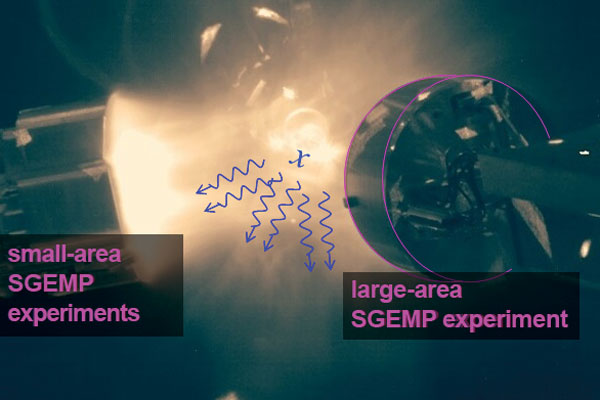
Nuclear survivability experiments
High fluence X-ray experiments were performed at NNSA High Energy Density facilities: Lawrence Livermore National Laboratory’s National Ignition Facility and Sandia’s Z Pulsed Power Facility. Sandia, LLNL and others collaborated on system-generated electromagnetic code-validation experiments at NIF. A record seven shots were executed in 48 hours. Similar Cavity SGEMP experiments were performed at the Z facility. Additionally, Sandia conducted experiments at Z that developed the capability to recover material samples exposed to thermomechanical shock from simulated warm X-ray insults. Recovery allowed the determination of material failure mechanisms and thresholds essential for establishing material survivability. (1000)
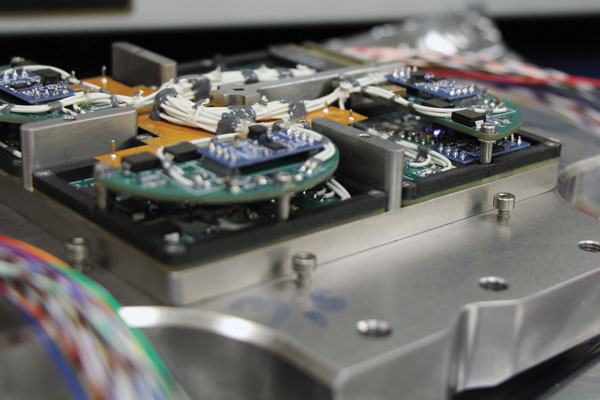
Power conversion in outer space
Power distribution and conversion are a standard fixture of most complex electrical systems. For outer space applications, power distribution subsystems rely on power electronics with superior reliability in harsh environments. The August Campaign 3 HOT SHOT flight included a payload with power conversion circuits built using Sandia-developed gallium nitride and aluminum gallium nitride materials. These wide and ultra-wide bandgap semiconductor materials exhibit superior performance in these environments. The HOT SHOT flight also helped to establish these components as robust to the mechanical stresses of flight. (1000, 2000, 5000, 6000, LDRD)
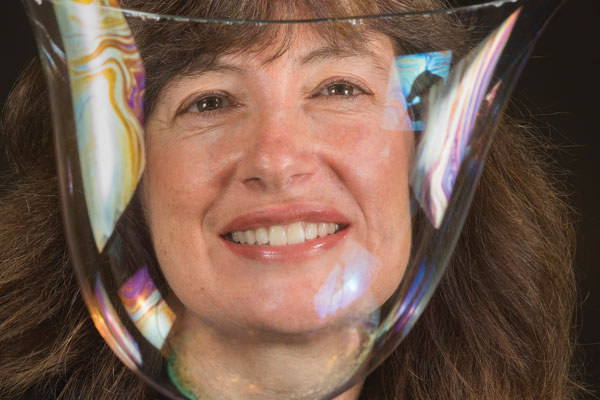
Energy I-Corps participation doubled
In 2019, DOE’s Energy I-Corps funded four Sandia teams — more than any other lab in cohort 10 — and doubled Sandia’s participation in the program. Energy I-Corps equips national lab researchers with tools to understand the real-world relevance of their technologies, inform future research and identify viable pathways to market for lab-developed technologies. Sandia’s 2019 cohort-funded projects include wear-resistant alloys, ultra-fast X-ray imagers, carbon dioxide memzyme and algae cultivation. (1000, 5000, 8000)
Quantum Scientific Computing Open User Testbed
Quantum computing promises disruptive speed-ups to many algorithms critical to U.S. national and economic security. QSCOUT is a new quantum computing facility at Sandia whose purpose is to assess the potential of near-term quantum computers to address scientific computing applications of interest to DOE and its Advanced Scientific Computing Research program. QSCOUT uses trapped ion qubits that enable high-fidelity gate operations and all-to all connectivity. The team has designed and realized the initial facility and demonstrated that they can trap ions, perform basic quantum operations and achieve extremely long (8-second) coherence times with the facility. (1000, 5000)
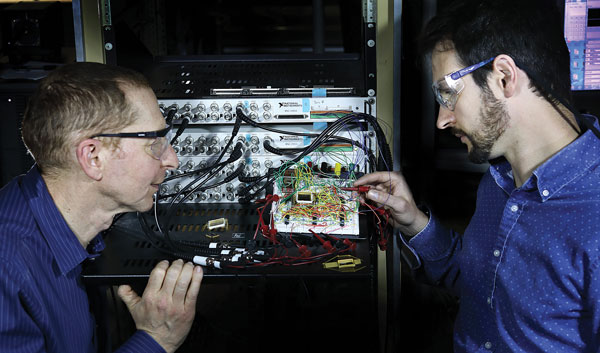
Ion tunable transistor for neuromorphic computing
Sandia researchers led a team with collaborators from Stanford and the University of Massachusetts, Amherst, to invent the Ion Tunable Redox Transistor, which has great potential for implementing low-energy artificial intelligence and machine learning based on neuromorphic computing. The work was published in Science Magazine on April 25, 2019, and was awarded a patent (10429343) by the U.S. Patent and Trademark Office. The achievement will strengthen Sandia’s leadership in brain-inspired computing and impact Sandia’s mission areas, as well as the U.S. microelectronics industry. (8000)
Autonomy for Hypersonics mission campaign
Sandia’s Laboratory Directed Research and Development-funded A4H mission campaign, focused on pioneering autonomous system technologies, has established AutonomyNM, a novel research coalition engaging dozens of faculty and students from across the country. Faculty collaborators contributed to developing an autonomous mission planning solution that rapidly generates flight plans. This solution will enhance U.S. leadership in this critical national security area. A4H currently has 24 collaborations with Sandia’s Academic Alliance and other university partners, and it contributed to a University of New Mexico-led, $5.5 million grant to design autonomous systems responsive to humans. (1000, 5000, LDRD)
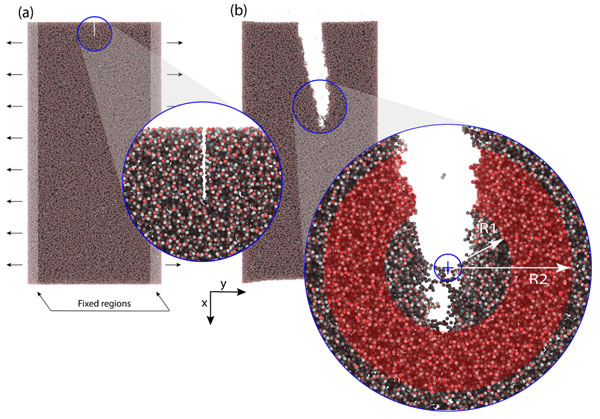
Predictive model of brittle fracture
Brittle fracture of glass and ceramic materials is often unpredictable; understanding the crack nucleation and the details of failure is critical for determining component lifetimes. Sandia has developed methods to determine brittle failure from atomistic simulations, linking nanoscale mechanisms to macroscale fracture. This allows for a detailed understanding of the effects of chemical additives (e.g., intentional additives, environmental water) on fracture. A science-based understanding of brittle fracture will enable design of materials that avoid issues with slow crack growth over decades of storage. (1000)
Line VISAR implementation
Measuring the electrical current delivered to nuclear fusion targets on Sandia’s Z machine is essential to understanding the target implosions. Over the past three years, Sandia and Lawrence Livermore national laboratories have collaborated to develop the most advanced current diagnostic ever deployed on a pulsed power facility: Z Line VISAR. This instrument provides unprecedented spatial and temporal resolution, delivering critical insight into current losses that may occur close to the target, as well as their potential impact on the fusion yield. (1000)
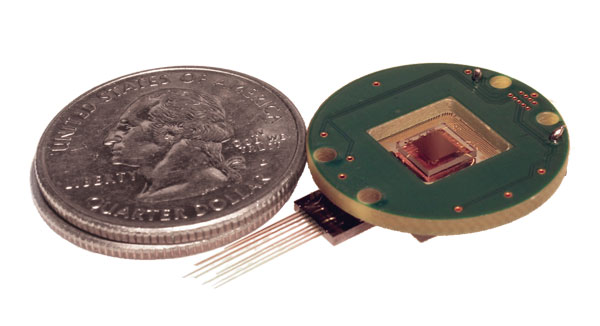
Ultra-compact optical power link
Transmitting power by optical fiber rather than metal wire protects electronics from voltage surges (e.g., static electricity, lightning). Optical power links convert electricity to light (laser), transmit that light and convert light back to electricity (photovoltaic). To meet Sandia’s needs for harsh environment operation and extremely low size and weight, Sandia developed a unique microsystem platform of heterogeneously integrated chip-scale gallium arsenide photovoltaics that generate from 3.3 to 1,000 volts. Sandia then demonstrated an optical power link operating flawlessly throughout a sounding rocket flight. (5000, 1000, LDRD)